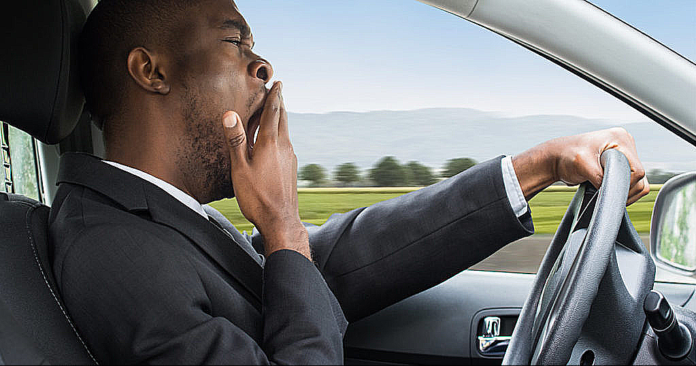Drowsy driving due to sleep deprivation is a significant problem in the United States, and its risks and tragedies are frightening. Sleep deprivation is when you don’t get the sleep you need, and it is a problem that has only worsened in recent years.
African Americans have a poorer sleep quality overall, associated with worse insomnia levels and the highest levels for excessive daytime sleepiness. That increased fatigue and tiredness can cause difficulty with drowsiness while driving. Sleep disorders and various medical conditions and medications that may cause drowsiness are prevalent among seniors, putting older drivers at an increased risk of a drowsy driving crash.
Similar to taking a drink of alcohol, sleepiness slows reaction time, dampens awareness, impairs judgment, and, most of all, increases the likelihood of getting into a fatal automotive crash. “All these things can increase your chances of making serious errors behind the wheel. Studies show that being awake for more than 20 hours results in an impairment equal to a blood alcohol concentration of 0.08%, the legal limit in all states,” warns Russell Rosenberg, Ph.D., director of the Atlanta School of Sleep Medicine and Technology in Atlanta, GA.
There are few drowsy driving laws worldwide, as drowsiness is often not measured or tested on the road. It takes a deeper investigation by police to determine whether drowsiness may have been a cause of an accident; it’s often subjective, which makes it difficult. Even though law enforcement now recognizes the dangers of driving while drowsy, only two states thus far (Arkansas and New Jersey) have laws in place that will charge a fatigued driver involved in a motor vehicle accident. Several states are now considering legislation allowing police to charge drivers with criminal negligence if they injure or kill someone while driving without adequate sleep.
“Many people acknowledge momentary sleep episodes, like head nodding, also known as micro-sleeps, but fail to appreciate the danger. If you lapse into sleep for 2 seconds, your car is out of control for almost 60 yards which is more than half a football field, and plenty of time to get into big trouble,” according to Dr. Rosenberg, who is also the former director of the National Sleep Foundation. He goes on to explain how drowsy drivers tend to underestimate their ability to stay awake when sleepy and feel compelled to operate their vehicles despite being tired. “Sleep is a biological drive that cannot always be controlled. It is possible to fall asleep for a few seconds and not even realize it. A few seconds is all it takes to crash. Many drivers underestimate the degree of impairment that sleepiness causes.”
The National Sleep Foundation’s fatigued driver stats survey states that a whopping 60 percent of adult drivers, 168 million people, say they have driven a vehicle while feeling drowsy. Over one-third, or 103 million people, have actually fallen asleep behind the wheel. According to the National Highway Traffic Safety Administration, falling asleep while driving resulted in an estimated 91,000 crashes, 50,000 injuries, and nearly 800 deaths yearly.
Be smart, don’t drive yourself to an early grave. If you start to exhibit any of the following behaviors while operating your car, put the brakes on your driving pronto:
- Difficulty focusing, frequent blinking, and/or heavy eyelids
- Difficulty keeping your head up
- Drifting, swerving, tailgating, and/or hitting rumble strips
- Inability to remember the last few miles driven
- Missing exits or traffic signs
- Yawning repeatedly
- Daydreaming and trouble focusing
Dr. Rosenberg says that trying to combat drowsiness by rolling down car windows and turning up the radio is just an exercise in futility. These suggestions do not work!
The National Sleep Foundation recommends the following strategies that can help prevent drowsy driving accidents:
- Get adequate sleep—most adults need 7 to 9 hours to maintain proper alertness during the day
- Schedule breaks about every 100 miles or 2 hours during long-distance driving trips
- Arrange for a traveling companion, someone to talk to and share the driving with
- Avoid alcohol and sedating medications—be sure to check labels for drowsiness side effects or check with your doctor
If you do find yourself nodding at the wheel, follow these tips:
- Stop driving
- Pull over to a safe spot and take a nap
- Stop and pick up a caffeinated beverage but don’t drink it while driving











